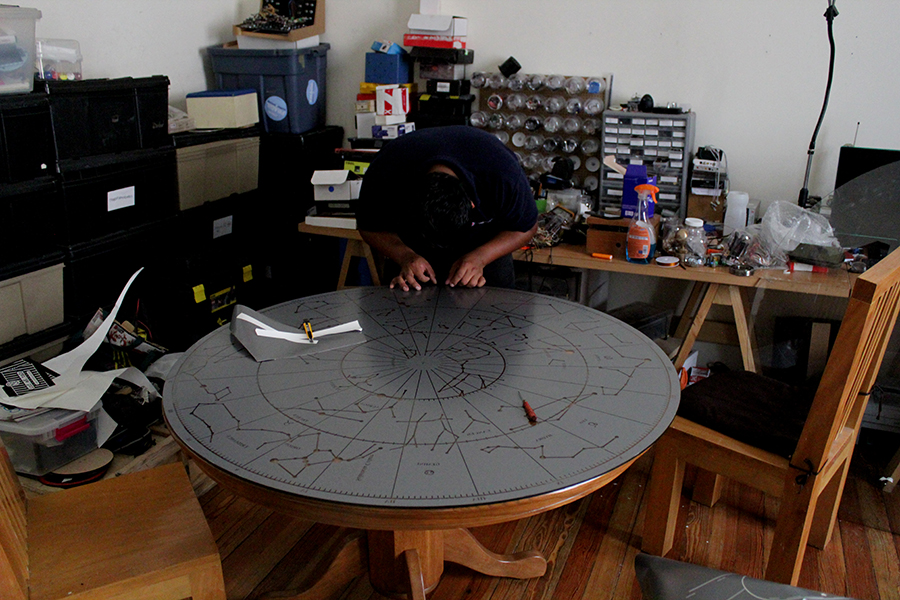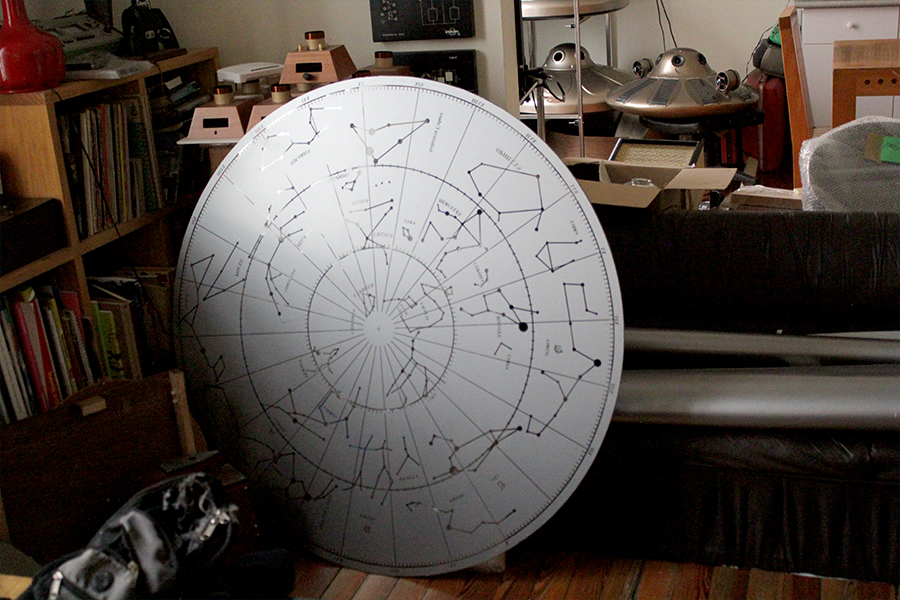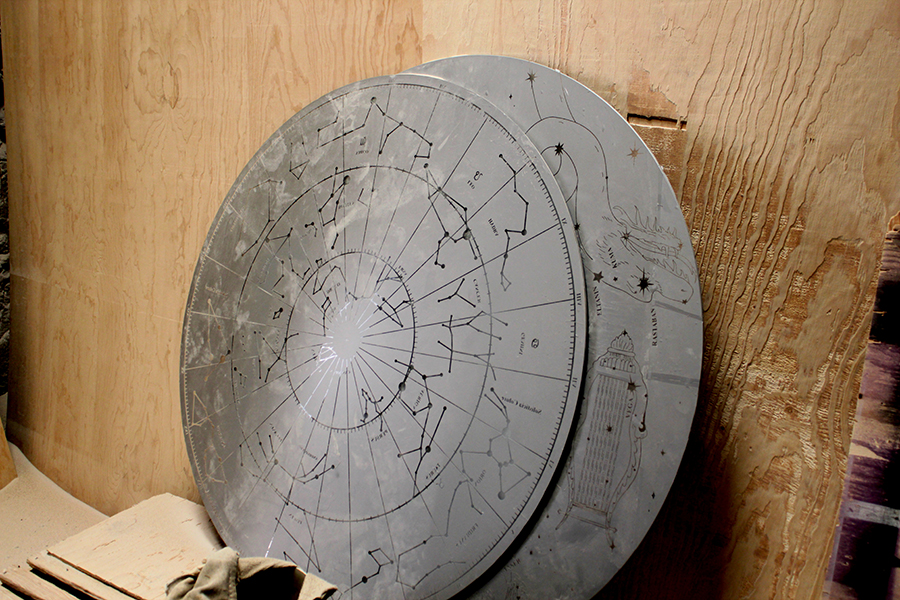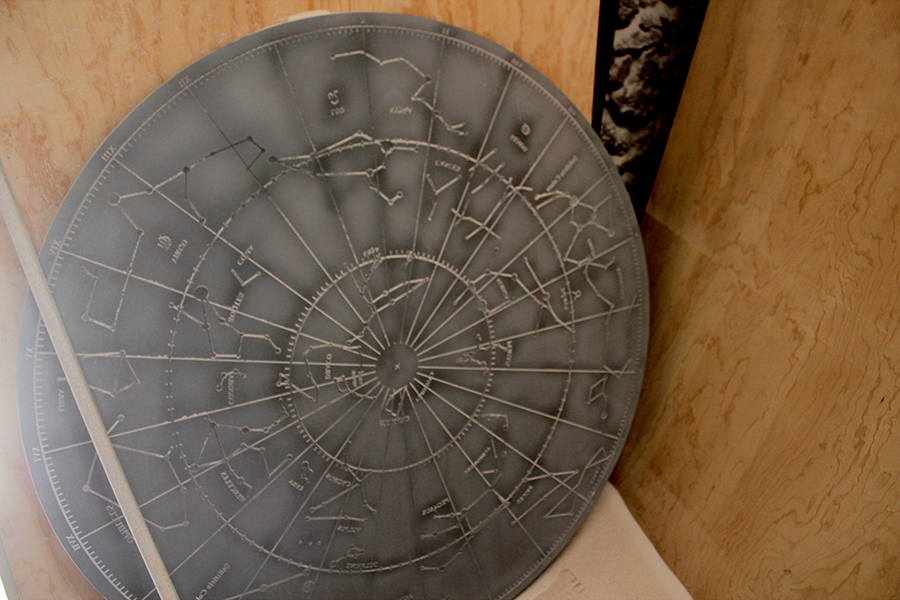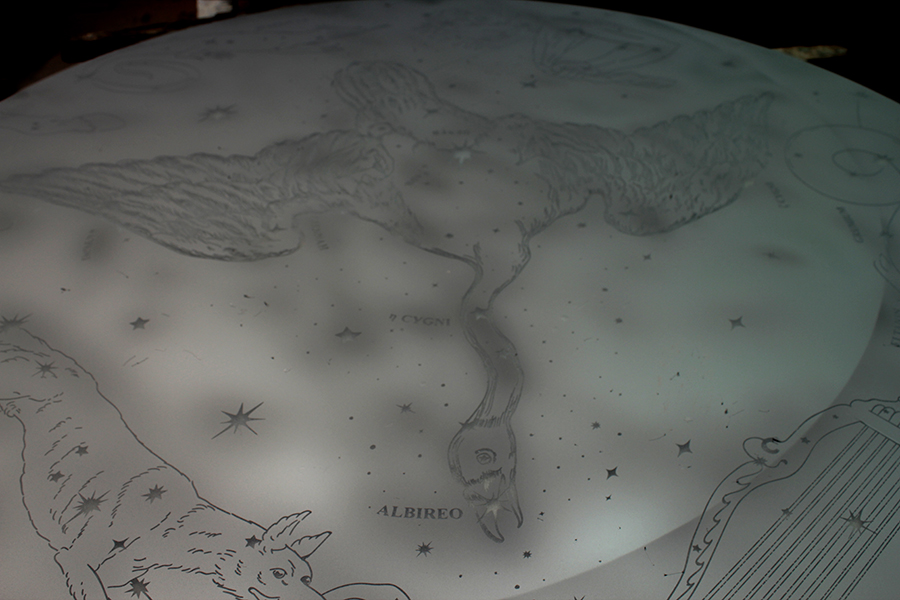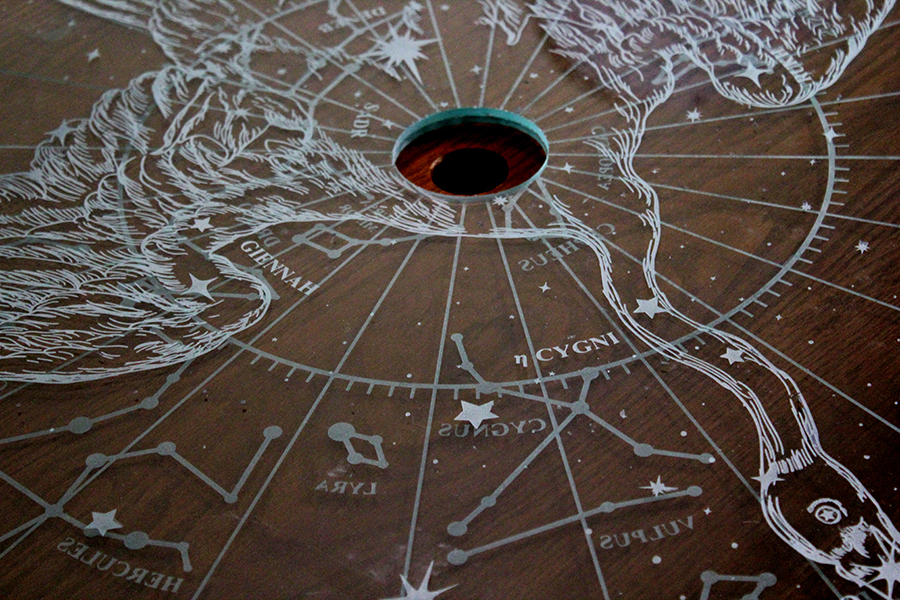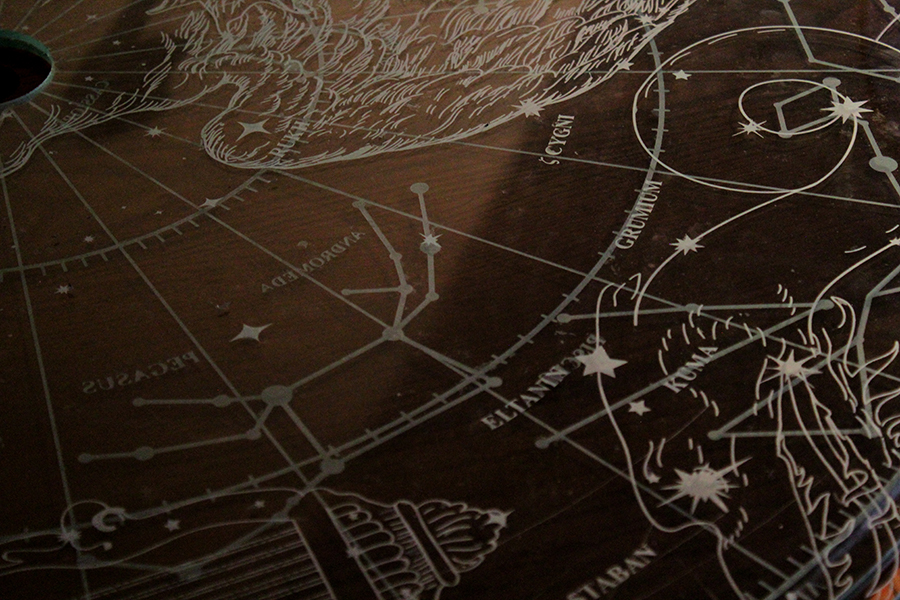
Proyecto realizado a través del Programa de Apoyo a la Producción e Investigación en Arte y Medios 2014 del Centro Multimedia del Centro Nacional de las Artes.
colaboradores : Santiago Itzcoatl Modelado / CNC, Constanza Casamadrid : Grafica, Mauricio Alvarez: Montaje, 220 : programación

To visualize the behavior of celestial bodies and analyze the hypotheses posed about their trajectories, astronomers have constructed various planetary models. Archimedes was the first to build a primitive planetarium that could predict the movement of planets. Using diverse technologies and materials inherent to their times, scientists like Kepler, Newton, or Picardi crafted these beautiful instruments, now treasured as part of science and art in the understanding of the forces governing the universe.
The advancement of planetariums did not halt with entirely mechanical systems; on the contrary, they evolved towards the use of optics and light to project the cosmos onto vast domes. This transition marked the beginning of a new architecture that emerged around these intricate systems, leading to the construction of specialized enclosures and domes. This shift not only expanded observational possibilities but also transformed the experience, merging science, technology, and art in the comprehension of the forces that govern our universe.
AquaPlanetarium is grounded in the kinetic, mechanical, and electrical principles of science and research. Its purpose is to establish models linking art and technology in order to conceive a visualizing mechanism for an extremely relevant cosmic phenomenon: the nature and behavior of water in the universe.
In this setup, two glass spheres filled with water are suspended, separated, and balanced at the ends of a pendulum. The pendulum, in turn, is freely and stably placed on a central post within a wooden structure with a circular base. Resting on this base is a glass disc engraved with a celestial planisphere. Wooden bases holding powerful electromagnets are positioned at both ends of the disc.

This glass disc rotates at a slow and constant speed, while one of the electromagnets emits electromagnetic frequencies toward one of the spheres. Due to the diamagnetic property of water molecules, electrons in the atoms of the spheres tend to align opposite to the induced electromagnetic field. This phenomenon drives the rotation of the spheres through the force of the electromagnetic field.
The electromagnetic field emits specific frequencies obtained from the radioelectric spectrum captured by the Kepler space telescope. These frequencies correspond to the spectrum of a particular star in the Cygnus constellation known as Kepler 22b. Thanks to precise calculations, astronomers discovered the existence of a planet in the habitable zone of this star, with the potential for atmosphere, water, and life.
Through this artistic experiment, the aim is to propose speculative hypotheses about existence linked to the mysterious molecule of water.
Water, an exceptional molecule, constitutes the most abundant substance on planet Earth. It is the origin of organic life and makes up 99 percent of the molecules in the human body. Thanks to its presence, humanity has achieved consciousness, leading us to recognize the omnipresence of this molecule in the universe: in distant stars, in nearby planets, and in our own Sun. Water emerges as a cosmic constant that persists as a mystery, challenging us to build hypotheses and conduct experiments to understand all the processes that its presence triggers.
The cosmos has been one of the greatest mysteries for humanity, both for physicists and mystics. Celestial bodies have shaped and challenged our understanding of consciousness as we try to place humans and the planetary species in the vast universe. By observing, studying, and analyzing the stars, we have projected ourselves into their constellations, sensing their presence and influence on our psyche. This process has led to a constant expansion of knowledge, transitioning from astrology to astronomy, from intuition and mysticism to methodologies, protocols, and mathematical calculations.
The roots of knowledge, like a vortex, had a common origin, then diverged to reunite as a binding knowledge. This artistic experiment contributes to the exploration of the relationship between water, consciousness, and the cosmos, offering a unique perspective that invites reflection and continuous questioning of our understanding of the universe and ourselves.
Thanks to the development of the space race, scientific instruments were successfully placed in planetary orbit to observe and study the cosmos with greater precision. One of these notable instruments is NASA’s Infrared Space Observatory (ISO), through which physicists conduct spectroscopic analyses on celestial bodies to detect the presence of water. This observatory has confirmed the existence of the simple molecule composed of two hydrogen atoms and one oxygen atom in both its solid and gaseous states throughout the universe.
Astronomer Louis Frank maintains the theory that Earth is constantly bombarded by tiny ice comets that, upon entering the atmosphere, evaporate. Astrophysical studies have confirmed the molecule’s formation in the physical and chemical reactions of stars, highlighting its significance in the formation of galaxies and planetary systems.
Electromagnetism, another fundamental force of the universe, has played a crucial role in the evolution of our technology. Michael Faraday unified electric and magnetic fields and, through experiments, discovered the diamagnetic property of water and other substances. Molecular magnetism studies continually seek to understand the structure of the water molecule and its relationship with other molecules. Aspects such as the structure between its atoms, hydrogen covalent bonds, electron spin, and electromagentic forces are explored. These studies have led to the proposal of new binding hypotheses regarding the structure and mysterious function of this fundamental molecule in the universe.
To comprehend nature and existence, countless theological, philosophical, and scientific hypotheses have been proposed. Modern physics, in its study of subatomic particles, quantum models, and dimensional structures, constantly confronts epistemological axioms posed by Eastern mystical philosophies. Empirical intuition is an inherent part of human consciousness.
The pre-Socratic Greek thinkers were interested in understanding the essence or “physis” of all things. Thales of Miletus, recognized as the first philosopher in Western history, is known for his studies on water and magnetic fields. He asserted that each particle is a god, an idea resonating in more contemporary concepts like the Higgs boson, which theoretical physicists have dubbed “the God particle.” Throughout history, countless thinkers, scholars of science, philosophy, and the spiritual realm, through perceptual, analytical, and scientific processes, have recognized the forces and energy inherent in the water molecule.
Neurosciences intersect with astrophysics, psychology, magnetochemistry, philosophy, holistic sciences, as well as mystical philosophies, to understand human consciousness based on the water molecule. This multidisciplinary approach reflects the complexity and interconnectedness of various fields of knowledge in the effort to unravel the mysteries of existence and consciousness.
The water on our planet is directly influenced by various extraterrestrial energy sources. The thermal energy from the Sun’s photons heats the air, generating waves in the oceans and causing the evaporation of water. This constant transformation process of the water molecule is essential for its cycle.
The gravitational force from the Moon plays a crucial role in tides and various biological processes synchronized with its cycles. This force affects both plankton and the human body and mind. Gravitational and electromagnetic forces strongly influence the structure of the water molecule, impacting all living organisms.
Giorgio Piccardi studied these cyclical influences from the cosmos and discovered that the anomalous behavior of the water molecule followed a cyclical periodicity due to the helical translation of the solar system in the Milky Way. This frequency has complicated the study of the molecule, as each experiment conducted to study its chemical reactions could fail or not occur as expected. However, Piccardi observed that when the chemical solutions from the experiments were placed isolated in a copper container, the chemical reactions developed exactly as predicted by the theory. These containers act as a Faraday cage, isolating the molecules from electromagnetic fields, both natural and those artificially produced by humanity. This discovery highlights the sensitivity of the water molecule to cosmic and electromagnetic influences, emphasizing its vital role in Earth’s natural processes.
To refer to the different layers of planet Earth, the Greek word “sphaira” is used, meaning sphere. Our planet is a sphere constituted by various spheres: the geosphere, forming the Earth’s crust with the minerals that compose it; the biosphere, which is the system formed by the collection of living beings of organic nature; the noosphere, a theory that addresses the planetary phase where intelligence occurs; the technosphere, the evolution of that intelligence including electronic and computational systems, eventually creating a stratospheric layer of artificial satellites; the hydrosphere, a system constituted by the water molecule in its subterranean, surface, and atmospheric forms; and the electromagnetosphere, an electromagnetic system surrounding the planet with a primary magnetic field and an important frequency known as the Schumann resonance, oscillating at 7.83 Hz and directly linked to the lightning and thunder that occur every second on the planet.
One theory suggests that these phenomena occur due to friction between water vapor molecules ascending and ice crystals descending, generating a separation of electric charges that accumulate and, upon releasing their energy potential, transform into an electromagnetic field that expands and becomes trapped between the Earth’s surface and the stratosphere. This phenomenon creates an oscillatory energy pulse perceived by life, and the water molecule is fundamental in producing the energy with which life synchronizes.
Suspended water molecules tend to form spheres due to atomic bonds, resulting in the surface tension of water as its force tendency is towards the interior of the liquid. Although the water molecule is bipolar but not symmetrical, the spherical shape it adopts through the union of its molecules in zero gravity is the closest to symmetry.
Astronomers are discovering various solar systems with planets, both gas giants and solid ones, where there may possibly be liquid water and symbiosis of life. Planet hunters have various tools for their calculations and observations, utilizing the study of oscillations in the electromagnetic fields of stars and seeking patterns in fluctuations in the infrared band to discover these exoplanets since they cannot be observed by traditional optical methods.
Aquaplanetarium proposes a model structure similar to those used in the past to visualize the cosmos, drawing inspiration from kinetic planetary models employed by figures such as Copernicus, Galileo, Newton, and Piccardi. These models represented the celestial spheres known as planets, allowing for mathematical analysis and visualization of their trajectories and cycles. The construction of the proposed planetarium prototype aims to link cognitive and intuitive stages and moments in the exploration of water, the cosmos, and consciousness, leveraging past knowledge to project into the future.
In this project, the electromagnetic frequencies emitted to the spheres are directly related to recently discovered stars or planets. Cosmic oscillations are transmitted to the vibrational molecule, interfering with its covalent bond structure, seeking to establish cosmic routes and bridges of molecular links. These frequencies are processed by open-source hardware and software systems.
The construction of Aquaplanetarium employs processes from different historical stages of technological development, such as electro-magnetized coils, to visualize electromagnetic processes in the water molecule as kinetic processes, establishing a connection with stars light-years away.
Through natural forces and processes, this structure aims to initiate a dialogue about the molecular connection of water and electromagnetism in the universe. Its goal is to link these forces as generators of human consciousness and planetary consciousness, exploring the interrelation between matter, energy, and consciousness in the cosmic context.

CENART 2014
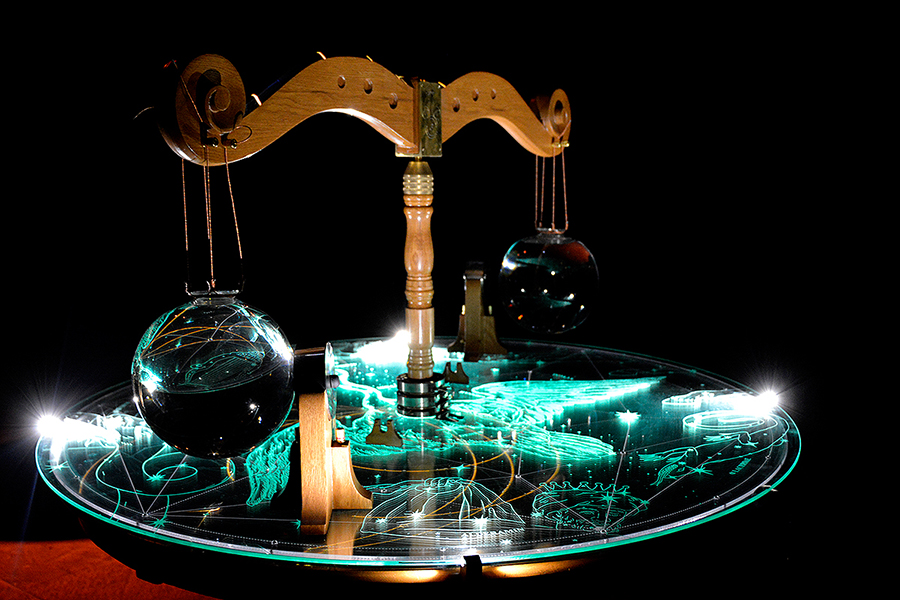
CENART 2014

CENART 2014

CENART 2014

CENART 2014

CENART 2014
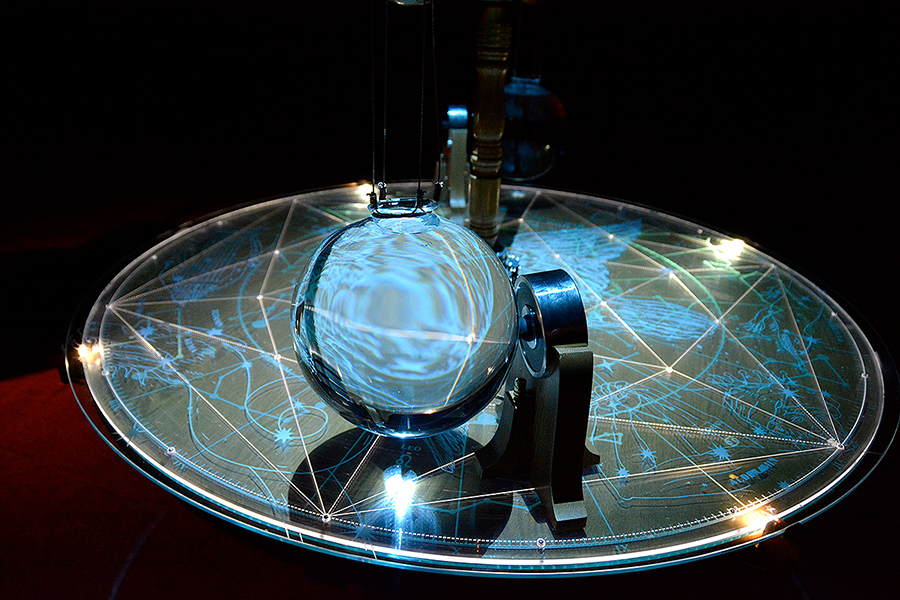
CENART 2014

CENART 2014
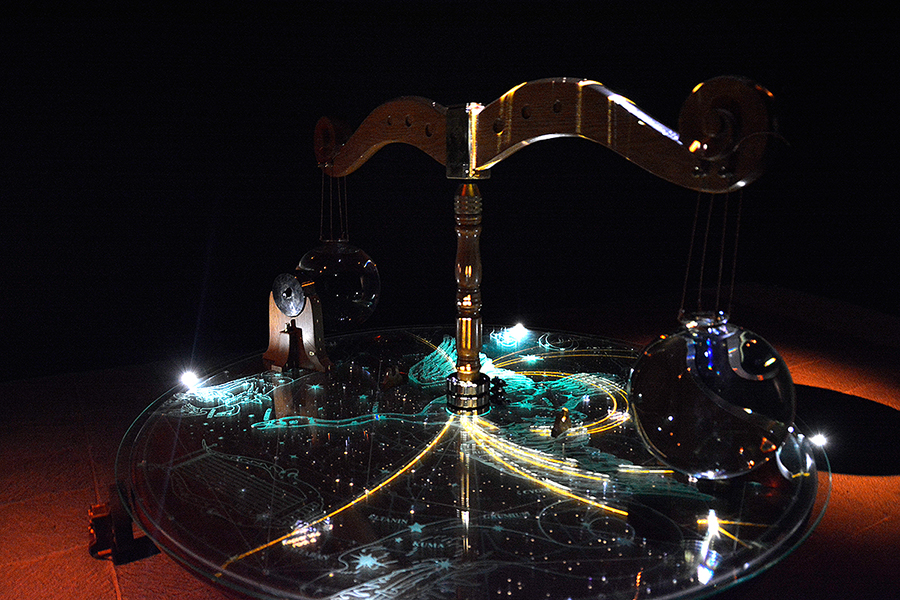
CENART 2014
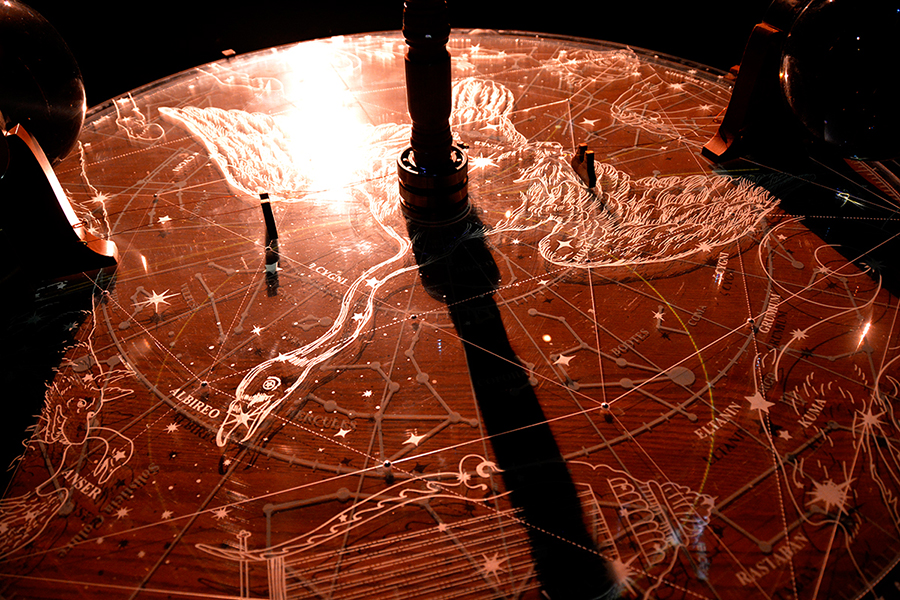
CENART 2014
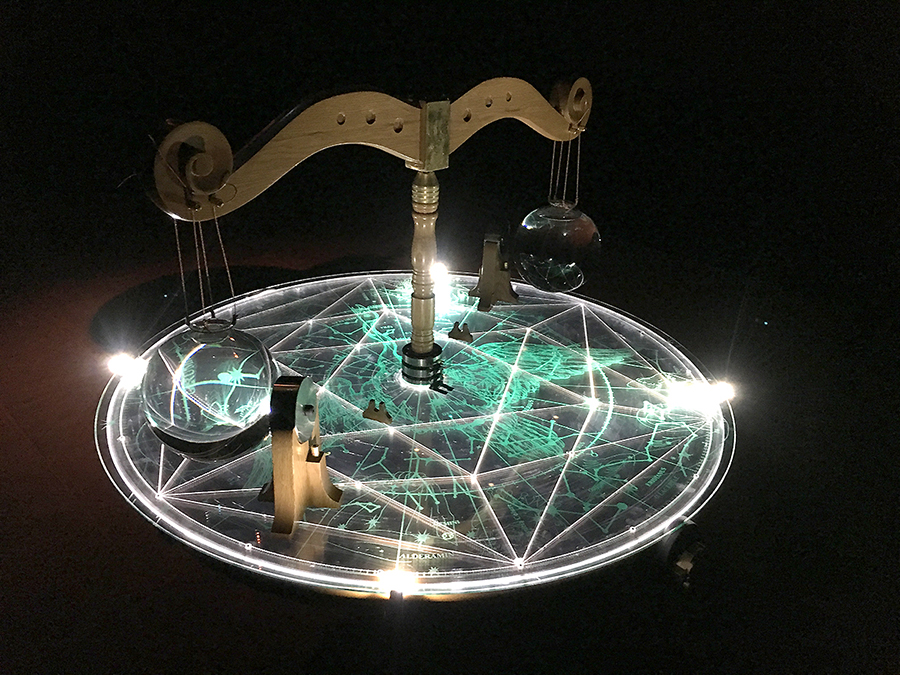
CENART 2014
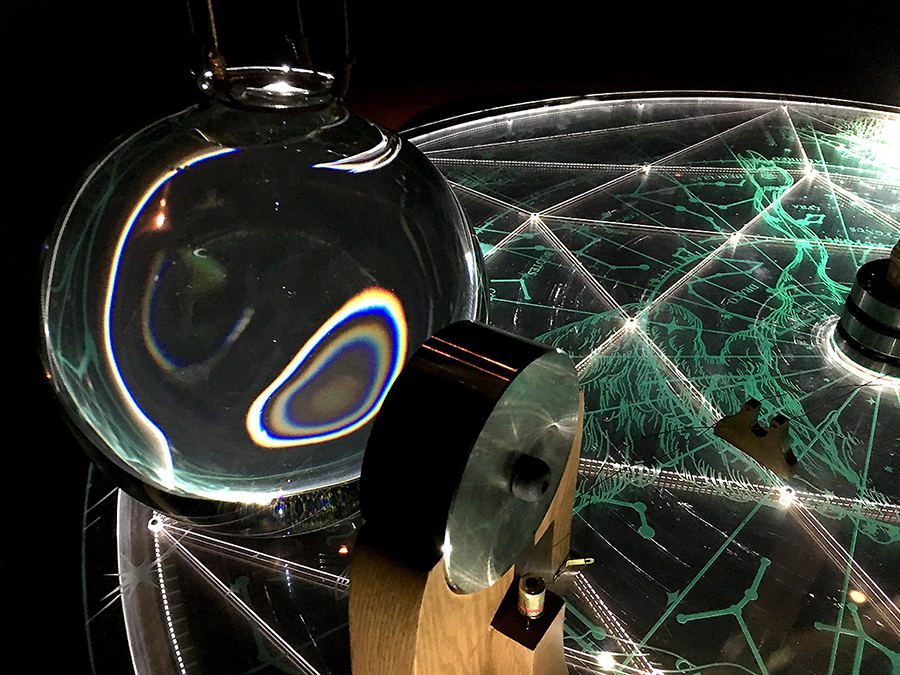
CENART 2014

CENART 2014
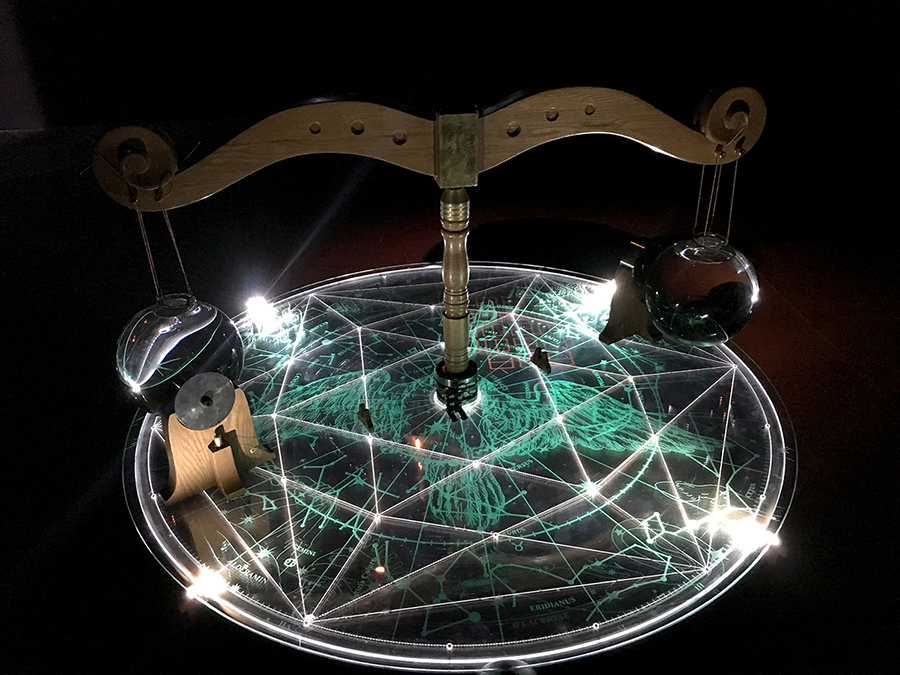
CENART 2014
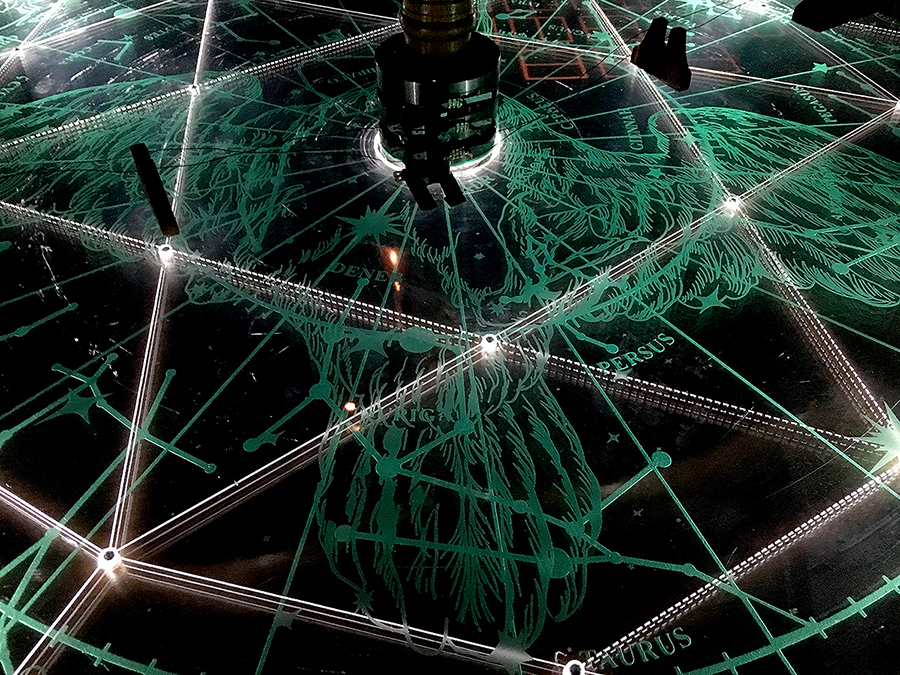
CENART 2014

CENART 2014
PRODUCTION

Planetarios: Arquimides,Picardi
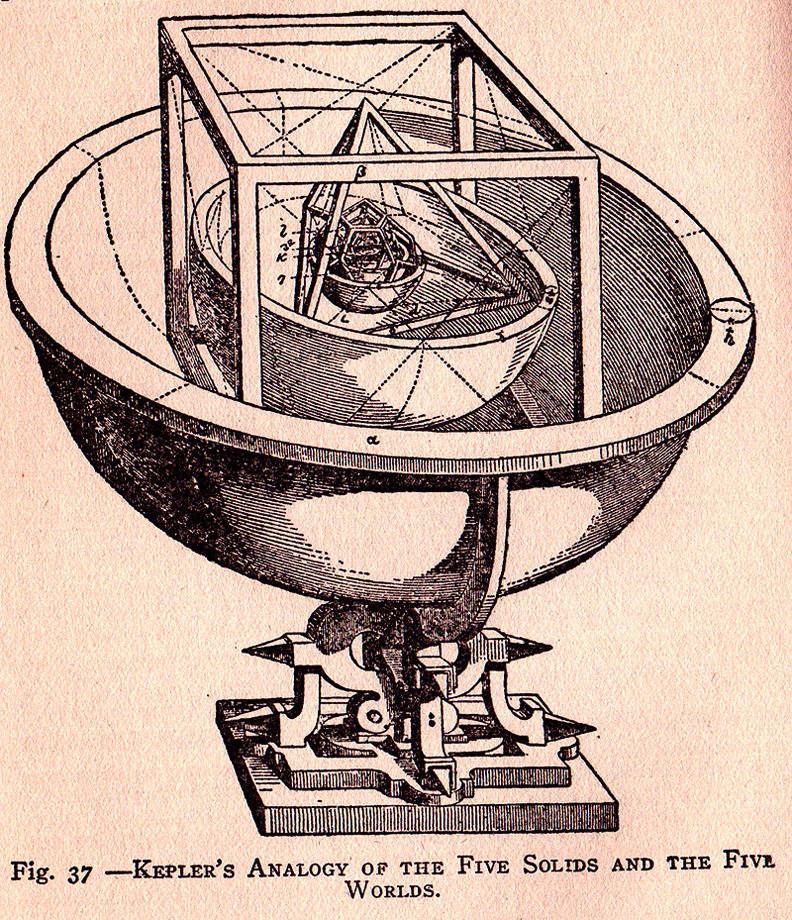
Kepler’s Solar System Model: An artistic contribution in which he proposed that the distance relationships of the six known planets in his time could be understood in terms of the five Platonic solids. It illustrated a planetary machine in which each Platonic solid fits between each pair of planetary spheres. This proposal was presented in 1596 in his book “Mysterium Cosmographicum.”

Winding Different Types of Electromagnets with enameled magnetic wire and steel cores
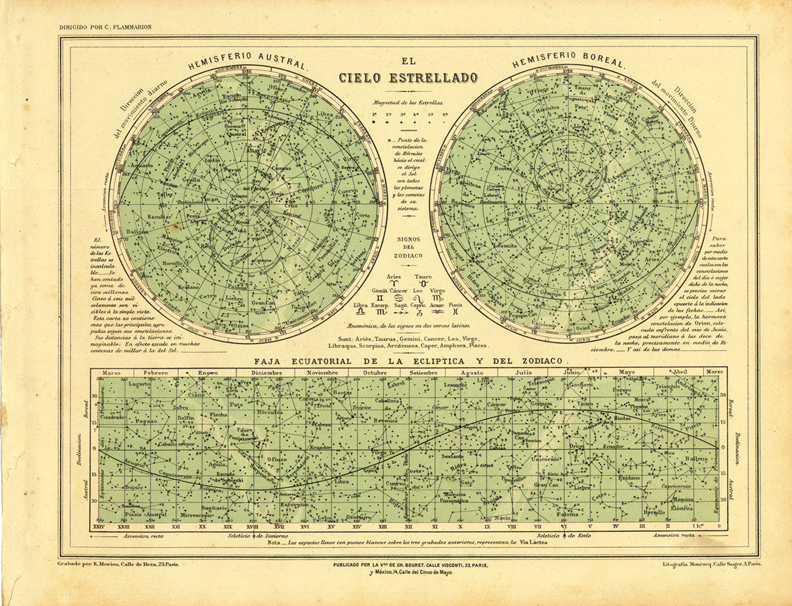
hemispheres
–
–
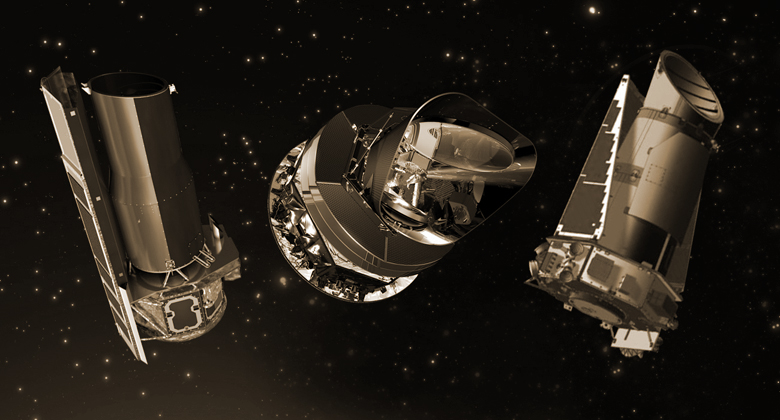
Kepler is a space observatory launched by NASA to locate planets orbiting stars. It was named in honor of the Renaissance astronomer Johannes Kepler and launched on March 7, 2009. By November 2014, Kepler, along with subsequent observations, had located and confirmed 995 exoplanets in more than 400 stellar systems, with an additional 3,217 candidate planets yet to be confirmed. In November 2013, astronomers reported, based on Kepler mission data, that there could be 400 billion Earth-sized planets orbiting sun-like stars and red dwarfs, solely in the Milky Way.
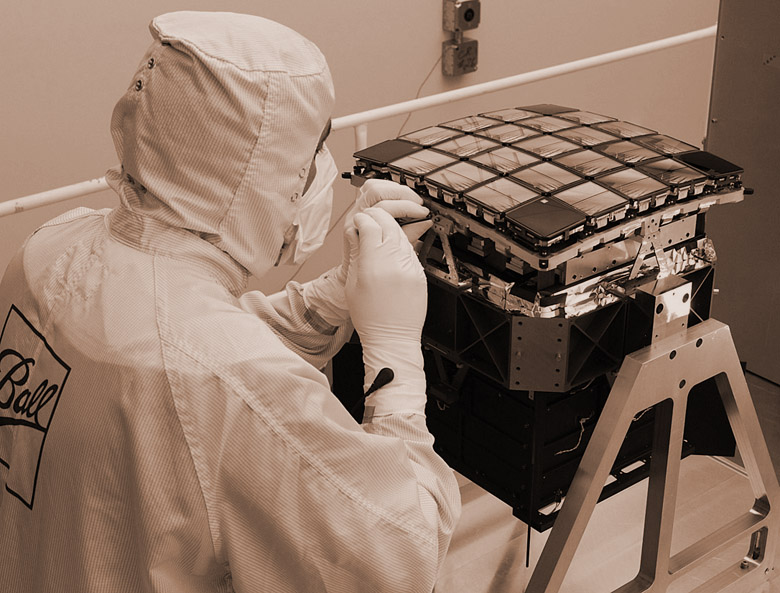
The main instrument of the Kepler Observatory is a photometer that continuously monitors the 150,000 primary and brightest stars within its fixed field of view. This data is transmitted to Earth for analysis. The focal point of the spacecraft’s camera consists of 42 CCDs, each with 2200×1024 pixels, making it the largest camera placed in space at the time. This array processes at a resolution of 95 megapixels, and the CCDs are read every 6 seconds to limit saturation. The field of view is fixed, maintained by the satellite.
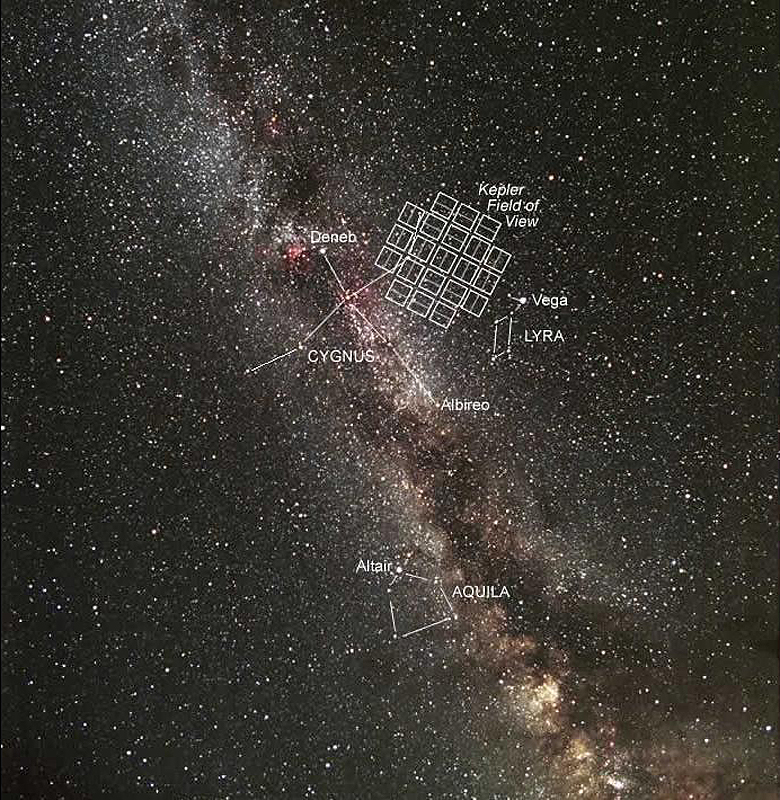
Kepler is orbiting the Sun, avoiding obstructions, gravitational perturbations, and torques inherent to Earth’s orbit. The photometer’s field of view points towards the northern constellations Cygnus, Libra, and Draco, which are far from the ecliptic plane. Thus, sunlight never reaches the photometer as the observatory orbits our Sun. This direction also aligns with the solar system’s movement towards the center of the galaxy. The observed stars are at the same distance from the galaxy’s center as the solar system and are close to the galactic plane. This is crucial, considering that the galactic position is linked to habitability, as suggested by the Rare Earth hypothesis.
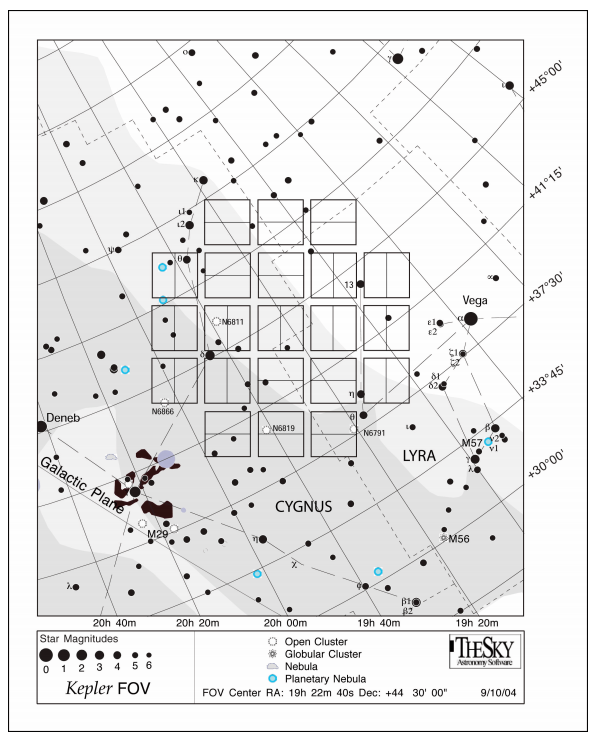
The “Kepler Field of View” is the fixed point in the galaxy where the telescope is oriented. It is located between the constellations of Cygnus, Lyra, and Draco. This is achieved by orbiting the Sun and not the Earth. The FOV must be away from the ecliptic plane so that the brightness of the Sun does not disturb the exposure of the sensors, allowing the continuous monitoring of the stars. In the FOV, the rectangles show the exact position of each of the sensors, with 21 double structures, resulting in a total of 42 CCDs.
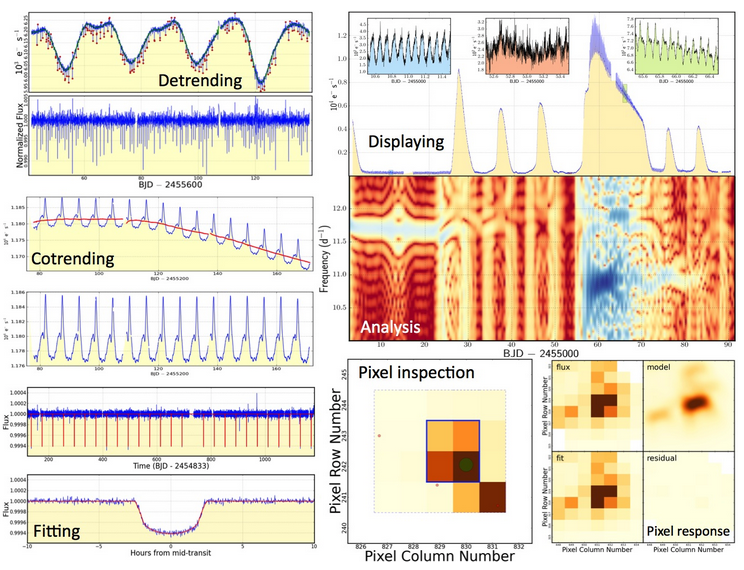
Kepler Science Center
The data collected by the photometer is recorded in orbit, establishing a direct link with the observatory and downloaded to NASA’s Space Science Division. All scientific data undergoes processing and calibration through the Kepler Science Pipeline, a software and algorithm development that analyzes astronomical data and prepares it for further study. This information is available online and can be downloaded to contribute to the observation, analysis of data, and collaborative search for planetary candidates.
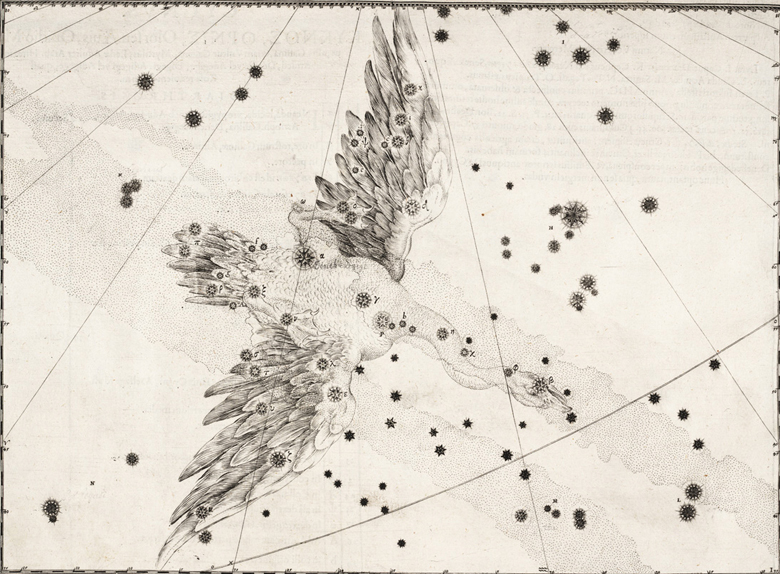
The official name of the constellation is Cygnus, and its genitive is Cygni. Therefore, the two mentioned stars are denoted as Alpha Cygni (Deneb) and Beta Cygni (Albireo); the abbreviation is Cyg, so they can also be written as α Cyg and β Cyg, respectively. Both stars represent the tail and beak of the bird, which is depicted in flight. Interestingly, the swan’s tail (Deneb) corresponds to the head of the cross, and vice versa, Albireo is in the head of the bird but is the foot of the cross. Three other stars, Gamma, Delta, and Epsilon, complete the cross asterism, with the first at the intersection and the others forming the ends of the crossbar, also representing the wings of the bird flying south.
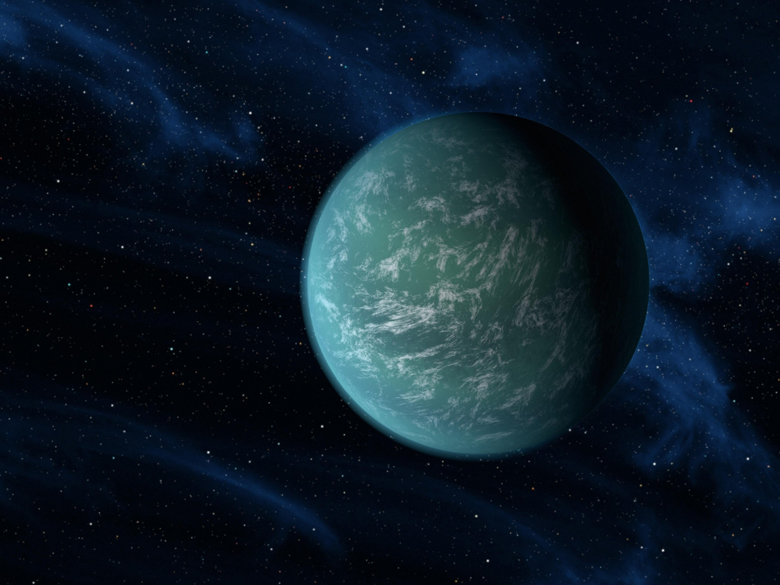
Kepler-22b is the first exoplanet (extrasolar planet) discovered in the so-called habitable zone (the region around a star where a planet could have water). For this reason, hypothetically, it could have the necessary conditions to support life, such as the presence of water and suitable temperature and atmosphere. It was discovered by the Kepler space telescope. The planet is located six hundred light-years away from Earth, has 2.4 times its radius, and orbits its star (Kepler-22) in 289 days.
The discovery was announced on December 5, 2011, by the young Venezuelan astronomer Nelson Rivero from the Universidad Nacional Experimental de Guayana (UNEG). The planet was originally discovered on the third day of Kepler’s scientific operations in mid-2010. The third transit was detected at the end of 2010. Additional information was provided by the Spitzer Space Telescope and ground-based observations. The planet’s radius is approximately 2 times that of Earth, located 600 light-years from Earth, and orbits the G-type star Kepler 22.
Currently, the composition of its mass and surface is unknown. If its density were similar to that of Earth (5.515 g/cm³), its mass would be equivalent to 13.8 Earths, and the surface gravity would be 2.4 times greater than ours. If Kepler-22b had the density of water (1 g/cm³), its mass would be 2.5 times that of Earth, and its gravity would be 0.43 times ours. The planet could fall into the category of planets known as super-Earths, depending on its final mass.
The distance from Kepler-22b to its parent star is 15% less than the distance from Earth to the Sun, but the luminosity (light emission) of Kepler-22b’s star is 25% lower than that of the Sun. The combination of a shorter distance to the star and lower intensity of emitted rays suggests that, if the planet lacks an atmosphere (an unlikely case), the surface temperature will be around -11 °C. If it has an atmosphere similar to Earth, the planet’s average temperature would be about 27 °C. If the atmosphere causes a greenhouse effect similar to Earth’s magnitude, the planet’s surface temperature would be 22°C. Kepler-22b, with twice the size of Earth, is considerably larger and may have a different composition. For example, the new planet may not be a super-Earth but might resemble Neptune, primarily an ocean with a small rocky core. However, Natalie Batalha, one of the scientists on the project, speculated, “This doesn’t go beyond the possibility that life could exist in an (ocean) planet.”
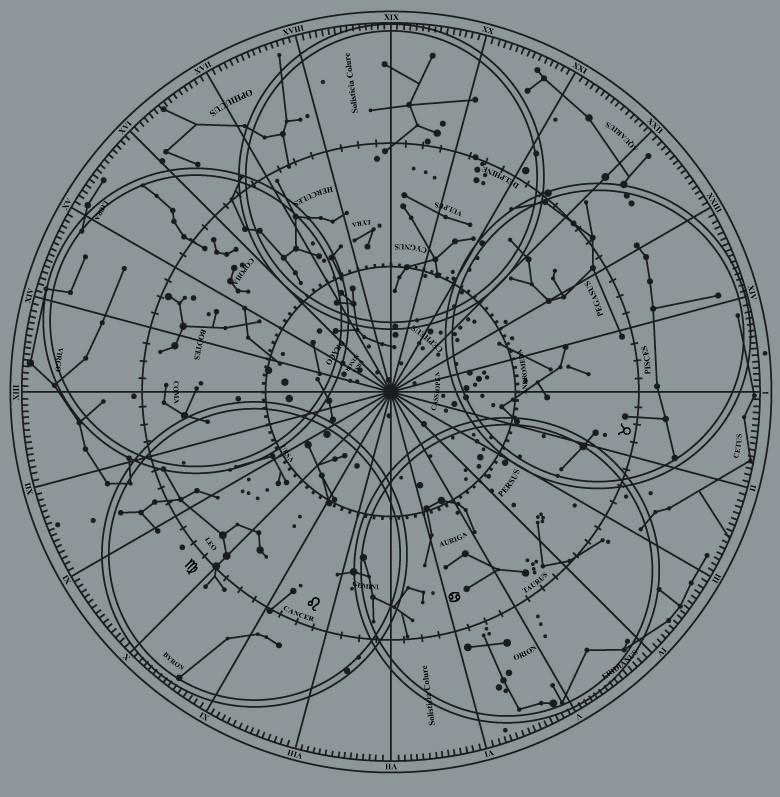
First layer: 120 cm diameter crystal engraved with a celestial map of the northern hemisphere.

Third Layer: 126 cm diameter crystal engraved with the Cygnus Constellation, The Swan.
producción de las esferas en cristal soplado.

esfera de borosilicato de cristal

electroiman 1200n 12 volts , 8 ohms

Modelado 3D de la structure
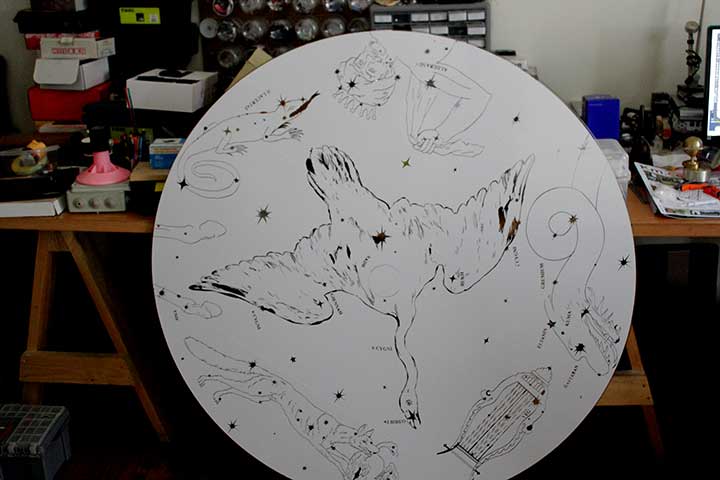
preparado de los Cristales para el grabado de las imagenes.
